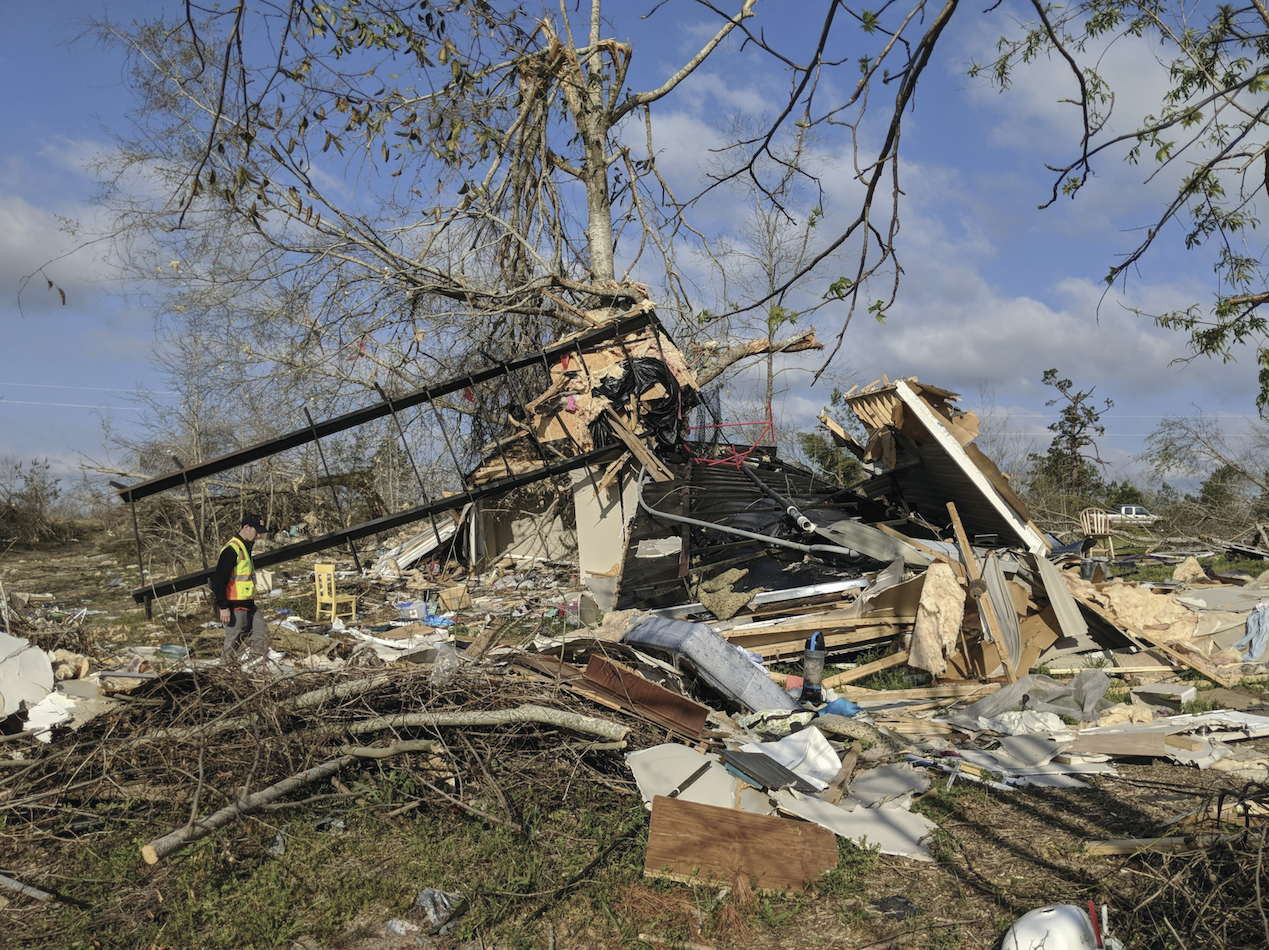Following the violent impact of the EF4 tornado that struck Beauregard, Alabama, on March 3, 2019, we are all too familiar with the devastation these storms can cause. Cars are left mangled and crushed. Homes are lofted and wrapped around snapped tree trunks, or seemingly disintegrated altogether.
Tragically, 23 persons lost their lives in the storm, each while sheltering in a home. As a wind engineer, I have spent many days in the field after the Beauregard tornado, and other similar events, using forensic on-site investigations, drones and other equipment to study the effects of tornadoes, how different buildings perform and how we can increase survivability in these extreme events. As I do so, I frequently face questions of hopelessness — is there really anything that can be done to withstand an EF4 tornado? Is there any value in studying building performance during such extreme events? Time and time again I have been told there is not, but with each detailed assessment my research team collects more evidence to the contrary.
In the Beauregard tornado, my research team has observed a number of successful case studies, in both manufactured homes and site-built homes, that have the potential to advance our understanding of tornadoes and reduce both economic impacts and loss of life. For example, my team studied a manufactured home off of Lee County Road 38 that was literally surrounded by tossed manufactured homes, several of which caused fatalities. This particular home sustained extensive damage — including a number of broken windows, missing roof shingles and was partially shifted off of its foundation – but any occupants would have been able to survive without major injury. While the home may have to be demolished and a new home installed, I would argue that its performance was a resounding success, having provided a safe place of refuge, at an affordable cost, during an extreme weather event that far exceeded design conditions.


Several other similar successes were observed, in both site-built and manufactured homes, as long as we accept that what defines success and failure is different in these extreme situations, and should be interpreted relative to what performance we desire during such rare, extreme events. With current technology, it is not feasible to construct a home that sustains no damage during an EF4 damage but is also affordable by the vast majority of the population. However, can we provide evidence that a properly constructed and installed home with a continuous vertical and lateral load path should be able to protect life safety even in an EF4 tornado, and limit structural damage in the outer limits of an EF4, or the direct impacts of an EF2 tornado? If so, then we must get to work at proving these concepts and communicating that information to communities in need.
Our next steps in the research is building out the layers of data required to properly contextualize the observed damage, accounting for the many complex factors at play such as the location and orientation of the buildings within the tornado path, the surrounding terrain and topography, the regulations in place at time of construction and/or installation, the structure of the tornado vortex and even the transient upper-level parent storm dynamics. These steps are critical to having any confidence in the lessons we learn from this event. The field deployments immediately after the tornado were just the beginning. We are continuing to analyze this data, experimentally test samples collected from the field deployments, develop numerical models from the data and hope to soon be able to conduct full-scale testing in the new Advanced Structural Testing Laboratory. As we continue the research, we are actively involved in the community as it rebuilds, participating in outreach sessions to do our part to educate and engage our communities to be safer from future events.
David Roueche is an assistant professor in the Department of Civil Engineering. Listen to him discuss his research here.